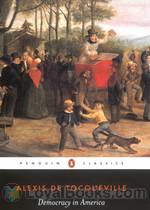|
Books Should Be Free Loyal Books Free Public Domain Audiobooks & eBook Downloads |
|
|
Books Should Be Free Loyal Books Free Public Domain Audiobooks & eBook Downloads |
|
Top Authors |
|---|
|
Book type:
Sort by:
|
By: Alexandre Dumas (1802-1870) | |
|---|---|
 Count of Monte Cristo (version 3)
Count of Monte Cristo (version 3)
Le Comte de Monte-Cristo is an adventure novel and one of the author's most popular works. He completed the work in 1844. The story takes place in France, Italy, islands in the Mediterranean and in the Levant during the historical events of 1815-1838 (from just before the Hundred Days to the reign of Louis-Philippe of France). It deals with themes of hope, justice, vengeance, mercy and forgiveness. The book is considered a literary classic today. | |
 Corsican Brothers
Corsican Brothers
Alexandre Dumas weaves the compelling story of Siamese twins who are separated physically but never in spirit. When one of the brothers is murdered, the other leaves Corsica for Paris to avenge the killing. Dumas brings this thrilling tale to life with his fascinating descriptions of Italy and France and his powerful portrayal of the undying love of brother for brother. | |
 Wolf-Leader
Wolf-Leader
Part local legend of a dark and dangerous Wolf-Leader, part childhood memories of his home near Villers-Cotterets, in Aisne, Dumas here penned a chilling supernaturlal encounter between man and the devil. Our hero, Thibault the shoemaker, is beaten on the orders of the Lord of Vez for hunting in the lord's forest. With Thibault's resentment at his treatment by the world at its height, the devil sees his chance and, in the guise of a wolf, proposes a deal which Thibault accepts; the ever available trade of one's soul for evil power... | |
 Celebrated Crimes, Vol. 4: Karl-Ludwig Sand
Celebrated Crimes, Vol. 4: Karl-Ludwig Sand
This is the fourth volume of Alexandre Dumas' studies of celebrated crimes and their perpetrators. This volume is concerned with the story of Karl Ludwig Sand, who stabbed August von Kotzebue to death in 1819. August von Kotzebue had been a prominent dramatist, a student of Musäus, whose royalist and conservative writings ultimately led to his assassination by a member of a revolutionary liberal Burschenschaft. - Summary by Carolin | |
 Celebrated Crimes, Vol. 4: Part 2: Urbain Grandier
Celebrated Crimes, Vol. 4: Part 2: Urbain Grandier
This is the dramatic story of Urbain Grandier, a catholic priest, who had a reputation to rival that of Casanova, which ultimately led to his destruction. He was accused of witchcraft after a series of accusations from nuns of a nearby convent, who claimed that Grandier has sent several demons upon them. The case is very well documented, and the original documents of the alleged pact, written in backwards Latin and signed by all participating demons, are still preserved. The case continues to inspire art and sciences, leading to assessments of the events in light of modern sociology, psychology, and legal sciences... | |
 Celebrated Crimes, Vol. 1: The Borgias and the Cenci (version 2)
Celebrated Crimes, Vol. 1: The Borgias and the Cenci (version 2)
Dumas's 'Celebrated Crimes' was not written for children. The novelist has spared no language--has minced no words--to describe the violent scenes of a violent time. In some instances facts appear distorted out of their true perspective, and in others the author makes unwarranted charges. The careful, mature reader, for whom the books are intended, will recognize, and allow for, this fact. The first volume comprises the annals of the Borgias and the Cenci. The name of the noted and notorious Florentine family has become a synonym for intrigue and violence, and yet the Borgias have not been without stanch defenders in history... | |
 Catherine Howard (Dramatic Reading)
Catherine Howard (Dramatic Reading)
Subtitled "The Throne, The Tomb, and The Scaffold - An Historical Play in 3 Acts From the Celebrated Play of that Name by Alexandre Dumas" - How can you resist a play about English history - the doomed fifth wife of Henry the 8th - by the celebrated French author of The Musketeers?? - Summary by ToddHW Cast list: Henry VIII, King of England: Larry Wilson Athelwold, Duke of Northumberland: Paul Simonin Archbishop Cranmer: alanmapstone Duke of Sussex: KHand Duke of Norfolk: tovarisch Grand Chamberlain:... | |
 Celebrated Crimes, Vol. 3: Mary Stuart (version 2)
Celebrated Crimes, Vol. 3: Mary Stuart (version 2)
The contents of these volumes of 'Celebrated Crimes', as well as the motives which led to their inception, are unique. They are a series of stories based upon historical records, from the pen of Alexandre Dumas, pere, when he was not "the elder," nor yet the author of D'Artagnan or Monte Cristo, but was a rising young dramatist and a lion in the literary set and world of fashion. The third volume is devoted to the story of Mary Queen of Scots, another woman who suffered a violent death, and around whose name an endless controversy has waged... | |
 Celebrated Crimes, Vol. 4: Karl-Ludwig Sand (version 2)
Celebrated Crimes, Vol. 4: Karl-Ludwig Sand (version 2)
This is the fourth volume of Alexandre Dumas' studies of celebrated crimes and their perpetrators. This volume is concerned with the story of Karl Ludwig Sand, who stabbed August von Kotzebue to death in 1819. August von Kotzebue had been a prominent dramatist, a student of Musäus, whose royalist and conservative writings ultimately led to his assassination by a member of a revolutionary liberal Burschenschaft. - Summary by Carolin | |
 Celebrated Crimes, Vol. 4: Part 2: Urbain Grandier (version 2)
Celebrated Crimes, Vol. 4: Part 2: Urbain Grandier (version 2)
This is the dramatic story of Urbain Grandier, a catholic priest, who had a reputation to rival that of Casanova, which ultimately led to his destruction. He was accused of witchcraft after a series of accusations from nuns of a nearby convent, who claimed that Grandier has sent several demons upon them. The case is very well documented, and the original documents of the alleged pact, written in backwards Latin and signed by all participating demons, are still preserved. The case continues to inspire art and sciences, leading to assessments of the events in light of modern sociology, psychology, and legal sciences... | |
 Paul Jones
Paul Jones
Dumas's play talks of American Naval Hero John Paul Jones's romantic entanglements and affairs of honor ashore in France. He later converted it to a novel. - Summary by ToddHW Cast list: The Marquis D'Auray: Amy Gramour The Marchioness, his wife: Sonia Count Emanuel, their child: Tomas Peter Margaret, their child: Leanne Yau Baron De Lectoure: Nemo Paul Jones: ToddHW Louis Achard: Thomas A. Copeland Mr. De La Jarry: Roger Melin Mr. De Nozay: RecordingPerson Notary: Zames Curran Laffeuille, valet to the Marchioness: Son of the Exiles Jasmin, valet to Emanuel: Eva Davis Stage Directions: Sandra Schmit Edited by: ToddHW | |
 Celebrated Crimes, Vol. 4: Part 3: Nisida
Celebrated Crimes, Vol. 4: Part 3: Nisida
This story details the many crimes surrounding a significant historical confrontation between a fisherman from the island of Nisida, named Gabriel, and the Italian Prince of Brancaleone. Dumas notes that "the details of this case are recorded in the archives of the Criminal Court at Naples." - Summary by jvanstan | |
 Celebrated Crimes, Vol. 5: Part 1: Desrues
Celebrated Crimes, Vol. 5: Part 1: Desrues
This story chronicles the crimes of Antoine-Francois Desrues from his childhood to his execution. Desrues constructed the veneer of a virtuous reputation that hid his ever-increasing deviancy from society. Eventually, his lust for fame and fortune crumbled his virtuous veneer, revealing the startling extent of his crimes, and condemning him to justice by the executioner's hand. - Summary by jvanstan | |
 Celebrated Crimes, Vol. 4: Part 3: Nisida (version 2)
Celebrated Crimes, Vol. 4: Part 3: Nisida (version 2)
Dumas, with the assistance of several friends, compiled Celebrated Crimes, an eight-volume collection of essays on famous criminals and crimes from European history. . This volume tells the story of the infamous prison on Nisida a small island near Naples. - Summary by Michele Eaton | |
 Celebrated Crimes, Vol. 5: Part 2: La Constantin
Celebrated Crimes, Vol. 5: Part 2: La Constantin
Dumas chronicles the court intrigues that led to the execution of Marie La Roux Constantin. La dame Constantin was known by French nobility in the 17th century as the “midwife to the Queen’s daughters.” This title was, in reality, a dark jest as her business was providing dangerous abortions to women ensnared in the machinations of powerful noblemen. This case also highlights how strongly gender inequalities permeated the justice system of this time as reviews by historians, like Dr. Leigh Whaley, found La Constantin was condemned “without any tangible evidence against her.” - Summary by jvanstan | |
 Mademoiselle De Belle Isle
Mademoiselle De Belle Isle
"The refined and fashionable audiences who... used to applaud the play of Mademoiselle de Belle Isle… would, in all probability, have objected to an English version of Dumas' clever play, upon the score of its immorality. It is not for me to determine whether the aristocratic audiences at the St James Theater did not understand what they heard, or whether the French language has a special charm for rendering inoffensive what plain English fails to recommend." - Summary by The Translator Cast list: The... | |
 Celebrated Crimes, Vol. 6: Part 1: Joan of Naples
Celebrated Crimes, Vol. 6: Part 1: Joan of Naples
The celebrated crimes committed during the life of Joan of Naples span from personal misdeeds to regional warfare , and ultimately unraveled her father’s legacy . Dumas projects her story through a deathly lens: beginning with the passing of King Robert the Wise, winding through the untimely demise of nobles, soldiers, and children, then ending at Joan’s own assassination. - Summary by jvanstan | |
 Celebrated Crimes, Vol. 6: Part 2: The Man in the Iron Mask, Martin Guerre
Celebrated Crimes, Vol. 6: Part 2: The Man in the Iron Mask, Martin Guerre
Dumas, with the assistance of several friends, compiled Celebrated Crimes, an eight-volume collection of essays on famous criminals and crimes from European history. Includes The Man in the Iron Mask and Martin Guerre. - Summary by Michele Eaton | |
 Celebrated Crimes, Vol. 5: Derues, La Constantin
Celebrated Crimes, Vol. 5: Derues, La Constantin
Dumas, with the assistance of several friends, compiled Celebrated Crimes, an eight-volume collection of essays on famous criminals and crimes from European history. Includes Vaninka and The Marquise De Ganges. - Summary by Michele Eaton | |
 Celebrated Crimes, Vol. 6: Part 2: The Man in the Iron Mask
Celebrated Crimes, Vol. 6: Part 2: The Man in the Iron Mask
In the late 1600s a man was doubly-imprisoned: his body in an iron cell and his face in an iron mask. Who the “man in the iron mask” was, why he was imprisoned, and how he was treated during imprisonment, remains a mystery that has captivated historians for centuries. Before Dumas penned the final volume of his D’Artagnan Romances, “The Man in the Iron Mask,” he wrote that “everything connected with the masked prisoner arouses the most vivid curiosity.” This essay is a comprehensive summary of theories regarding the masked prisoner’s identity and history from the 1770s to Dumas’ time . - Summary by jvanstan | |
 Celebrated Crimes, Vol. 6: Part 3: Martin Guerre
Celebrated Crimes, Vol. 6: Part 3: Martin Guerre
Martin Guerre was a French peasant that, during a long absence, was famously impersonated in the 16th century. Although the real Martin Guerre is suspected of no serious crimes, his imposter, Arnaud du Tilh, engaged in fraud and adultery while pursuing false claims to the Guerre inheritance. Dumas later incorporates this celebrated crime into his novel “The Two Dianas.” - Summary by jvanstan | |
 Celebrated Crimes, Vol. 7: Part 1: Ali Pacha
Celebrated Crimes, Vol. 7: Part 1: Ali Pacha
Ali Tepeleni, Pacha of Janina, rose to power during the early 1800s in one of the Ottoman Empire’s most unruly territories . His ferocious imposition of will was limitless, earning him the sobriquet of “the Lion of Janina.” As the mauling and murder of innocents sustains the lion, so did it sustain Ali Pacha’s rule. Thus, the range of celebrated crimes that Dumas describes in this essay are as vast as Ali Pacha’s ambition – an ambition rooted in his mother’s callous advice that “success justified everything, and everything is permissible to him who has the power to do it.” - Summary by jvanstan | |
By: Alexandre Dumas (fils) | |
|---|---|
 Camille
Camille
The Lady of the Camellias (French: La Dame aux camélias) is a novel by Alexandre Dumas, fils, first published in 1848, that was subsequently adapted for the stage. The Lady of the Camellias premiered at the Theatre de Vaudeville in Paris, France on February 2, 1852. An instant success, Giuseppe Verdi immediately set about to put the story to music. His work became the 1853 opera La Traviata with the female protagonist “Marguerite Gautier” renamed “Violetta Valéry”. | |
By: Alexandre Exquemelin (c. 1645-1707) | |
|---|---|
 The Pirates of Panama
The Pirates of Panama
This volume was originally written in Dutch by John Esquemeling, and first published in Amsterdam in 1678 under the title of De Americaeneche Zee Roovers. It immediately became very popular and this first hand history of the Buccaneers of America was soon translated into the principal European languages. The first English edition was printed in 1684. Esquemeling served the Buccaneers in the capacity of barber-surgeon, and was present at all their exploits. Little did he suspect that his first hand observations would some day be cherished as the only authentic and true history of the Buccaneers and Marooners of the Spanish Main... | |
By: Alexis de Tocqueville (1805-1859) | |
|---|---|
 Democracy in America
Democracy in America
Arguably, one of the most influential and insightful pieces of work concerned with American political life, Democracy in America directs itself towards American politics and society, and is considered to be one the best books written on the subject. Published in 2 volumes, in 1835 and 1840, Tocqueville records his findings after studying the thriving nation in his nine month exploratory journey. The young French aristocrat first came to America on an official assignment to study the American penal system, but instead used this as a pretext to study American society... | |
 American Institutions and Their Influence
American Institutions and Their Influence
| |
 Correspondence & Conversations of Alexis de Tocqueville with Nassau William Senior from 1834 to 1859, Volume 2
Correspondence & Conversations of Alexis de Tocqueville with Nassau William Senior from 1834 to 1859, Volume 2
| |
By: Alexis Soyer (1810-1858) | |
|---|---|
 Pantropheon
Pantropheon
Soyer was a 'celebrity chef', devising innovations such as water-cooled refrigerators and adjustable temperature ovens. He developed many popular recipes and catered for 2000 guests at Queen Victoria's coronation celebration. He had a social conscience and donated a penny for every mean sold, to help alleviate the Irish famine. During the Crimean War, he laid the foundations for the future British Army Catering Corps. He is credited with writing several books, including 'The Shilling Cookery Book for the People' and 'The Poor Man's Regenerator'. In this volume, he traces the history of food, food production, preparation and dining experiences. - Summary by Lynne Thompson | |
By: Alfonso Josephs Sheafe | |
|---|---|
 The Fascinating Boston How to Dance and How to Teach the Popular New Social Favorite
The Fascinating Boston How to Dance and How to Teach the Popular New Social Favorite
| |
By: Alfred A. (Alfred Augustus) Grace (1867-1942) | |
|---|---|
 The Tale of Timber Town
The Tale of Timber Town
| |
By: Alfred Ainger (1837-1904) | |
|---|---|
 English Men of Letters: Crabbe
English Men of Letters: Crabbe
| |
By: Alfred Arthur Reade | |
|---|---|
 Study and Stimulants; Or, the Use of Intoxicants and Narcotics in Relation to Intellectual Life
Study and Stimulants; Or, the Use of Intoxicants and Narcotics in Relation to Intellectual Life
| |
 Tea and Tea Drinking
Tea and Tea Drinking
Not a complete history of tea, but a pleasant diversion concerning tea, the pleasures found in its drinking, effects, benefits, cautions, etc. Sprinkled with poetry and excerpts from historical personages and the occasional sermon. - Summary by KevinS | |
By: Alfred Austin (1835-1913) | |
|---|---|
 The Bridling of Pegasus Prose Papers on Poetry
The Bridling of Pegasus Prose Papers on Poetry
| |
 Fortunatus' Song
Fortunatus' Song
Not all of the English poets laureate have been the greatest masters of verse. Alfred Austin, who assumed this post after Alfred Lord Tennyson, was one of the less distinguished - if more prolific - late Victorian poets. In modern times, his verse has become celebrated not for its smooth earnestness, but rather for the occasional howlers it contains. A notable example is this song from his pastoral epic Fortunatus the Pessimist, the final couplet of which is a popular favourite in anthologies of bad verse. - Summary by Algy Pug | |
By: Alfred Ayres (1826-1902) | |
|---|---|
 The Verbalist
The Verbalist
Ayres arranges usage problems alphabetically and treats certain areas in greater detail as he sees fit. For example, his first entry is A-AN (articles). His second is ABILITY-CAPACITY, in which he distinguishes between the meanings. The alphabetical arrangement continues through to YOURS. (Introduction by Bill Boerst) | |
By: Alfred B. Richards | |
|---|---|
 Cromwell
Cromwell
| |
By: Alfred Bester (1913-1987) | |
|---|---|
 Push Of A Finger
Push Of A Finger
Science fiction from the 50s by one of the masters, Alfred Bester. Society has committed itself to complete stability. Nothing is allowed to upset this stability, nothing that is not planned and approved and accounted for in advance. Yes, this is hard to imagine but this has produced decades, nay, centuries of predictable prosperity and peace. Even the newspapers have very little to write about. One reporter however is curious about the "Prog" building, where pronouncements are issued every day just as Moses issued the commandments... | |
By: Alfred Biese (1856-1930) | |
|---|---|
 The Development of the Feeling for Nature in the Middle Ages and Modern Times
The Development of the Feeling for Nature in the Middle Ages and Modern Times
| |
By: Alfred Binet (1857-1911) | |
|---|---|
 The Mind and the Brain
The Mind and the Brain
Today, almost every layperson understands the concept of intelligence tests and can glibly discuss IQ scores. In fact, these have become so common in the popular imagination that magazines, websites and pop quizzes offer to assess your intelligence at the drop of a hat! In this scenario, it's interesting to recall the very first person who proposed the concept of measurable intelligence. Alfred Binet was basically a clinical psychologist whose wide-ranging interests in learning difficulties faced by school children prompted him to undertake extensive studies in human cognition, psychology, learning and behavior... | |
By: Alfred Brittain | |
|---|---|
 Roman Women
Roman Women
| |
By: Alfred Burnett (1824-1884) | |
|---|---|
 Incidents of the War: Humorous, Pathetic, and Descriptive
Incidents of the War: Humorous, Pathetic, and Descriptive
| |
By: Alfred C. Chapin | |
|---|---|
 The Future of Brooklyn
The Future of Brooklyn
| |
By: Alfred Carmichael (1874-1963) | |
|---|---|
 Indian Legends of Vancouver Island
Indian Legends of Vancouver Island
| |
By: Alfred Chaston Chapman (1869-1932) | |
|---|---|
 Brewing
Brewing
Great as is the debt of gratitude which the brewing industry owes to the labours of scientific men, it has been more than repaid by the immense services which that industry has indirectly rendered to the advancement of modern science. It may be said without exaggeration that in respect of the number of scientific investigations of the first order of importance to which it has given rise, the brewing industry stands easily preeminent among the industries of mankind, and that without the stimulus furnished... | |
By: Alfred Comyn Lyall (1835-1911) | |
|---|---|
 Studies in Literature and History
Studies in Literature and History
| |
By: Alfred Coppel (1921-2004) | |
|---|---|
 The Hills of Home
The Hills of Home
| |
 The Invader
The Invader
| |
 The Peacemaker
The Peacemaker
| |
 Turning Point
Turning Point
| |
 Turnover Point
Turnover Point
| |
By: Alfred Crowquill (1804-1872) | |
|---|---|
 The Giant Hands or, the Reward of Industry
The Giant Hands or, the Reward of Industry
| |
By: Alfred de Musset (1810-1857) | |
|---|---|
 The Confession of a Child of the Century
The Confession of a Child of the Century
In this autobiographic novel, an aging man reflects on his past. We are witness to the relationships he has along the way, his mistakes, and finally- in the most unexpected and honorable way- the sudden developement of his belief in god. | |
By: Alfred de Vigny (1797-1863) | |
|---|---|
 Cinq Mars
Cinq Mars
| |
By: Alfred Dreyfus (1859-1935) | |
|---|---|
 Five Years of My Life 1894-1899
Five Years of My Life 1894-1899
Alfred Dreyfus, a Jewish captain in the French Army was court martialed in 1894 on a trumped up charge of treason and condemned to life imprisonment on Devil’s island, a penal colony off French Guiana. His prison diary, published as Five Years of My Life in 1901 is a heroic tale of survival against daunting odds: isolation, deprivation, torture . . Alfred left behind in Paris his wife Lucie, who, forbidden to join her husband in exile, struggled to protect their two children from the rampant anti-Semitism that swirled about them, while she begged her husband to hold onto life as she tried to clear his name... | |
By: Alfred E. Johnson (1879-) | |
|---|---|
 Frank Reynolds, R.I.
Frank Reynolds, R.I.
| |
 The Hazeley Family
The Hazeley Family
| |
By: Alfred E. Pease | |
|---|---|
 The Badger A Monograph
The Badger A Monograph
| |
By: Alfred Edgar Coppard (1878-1957) | |
|---|---|
 The Best British Short Stories of 1922
The Best British Short Stories of 1922
Twenty-four short stories by famous and not-so-famous British authors. | |
By: Alfred Edward Taylor (1869-1945) | |
|---|---|
 Thomas Hobbes
Thomas Hobbes
This work is a look at the life and ideas of Thomas Hobbes, English philosopher of the seventeenth century. The most important ideas are found in his famous work Leviathan. Taylor looks at such concepts of Hobbes as the contract, naturalism, sovereignty, natural laws, church and state, absolutism, and political obligation, etc. | |